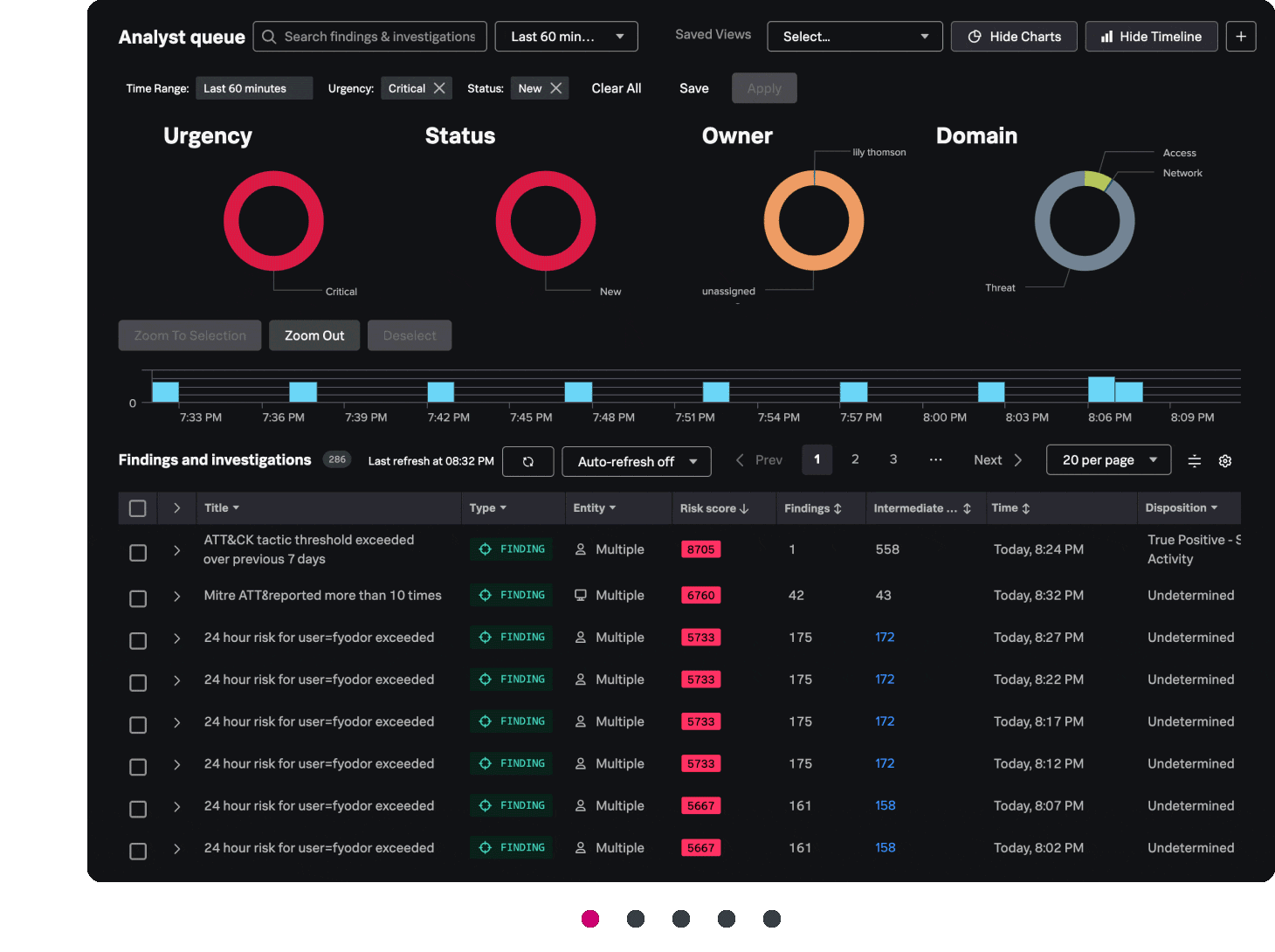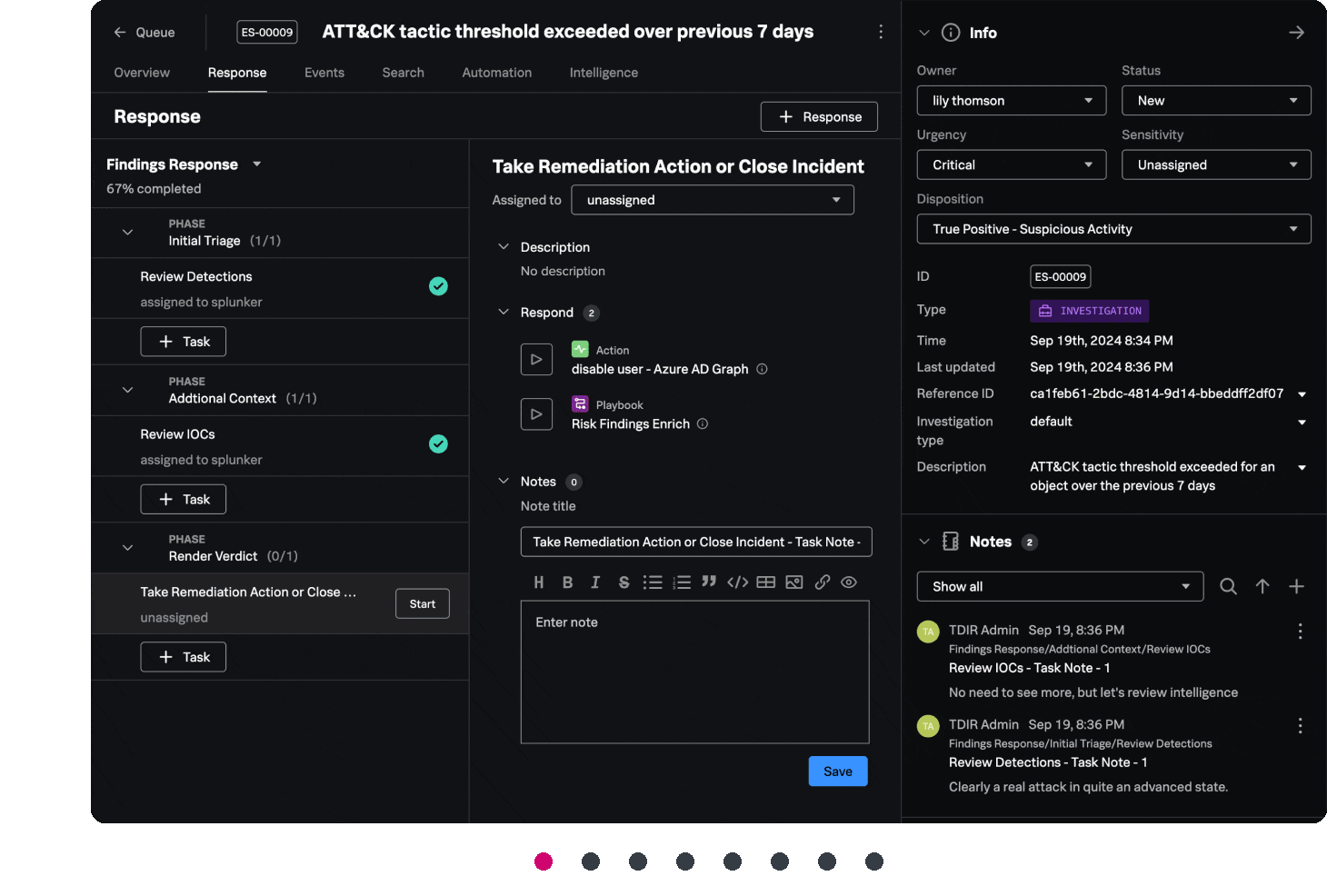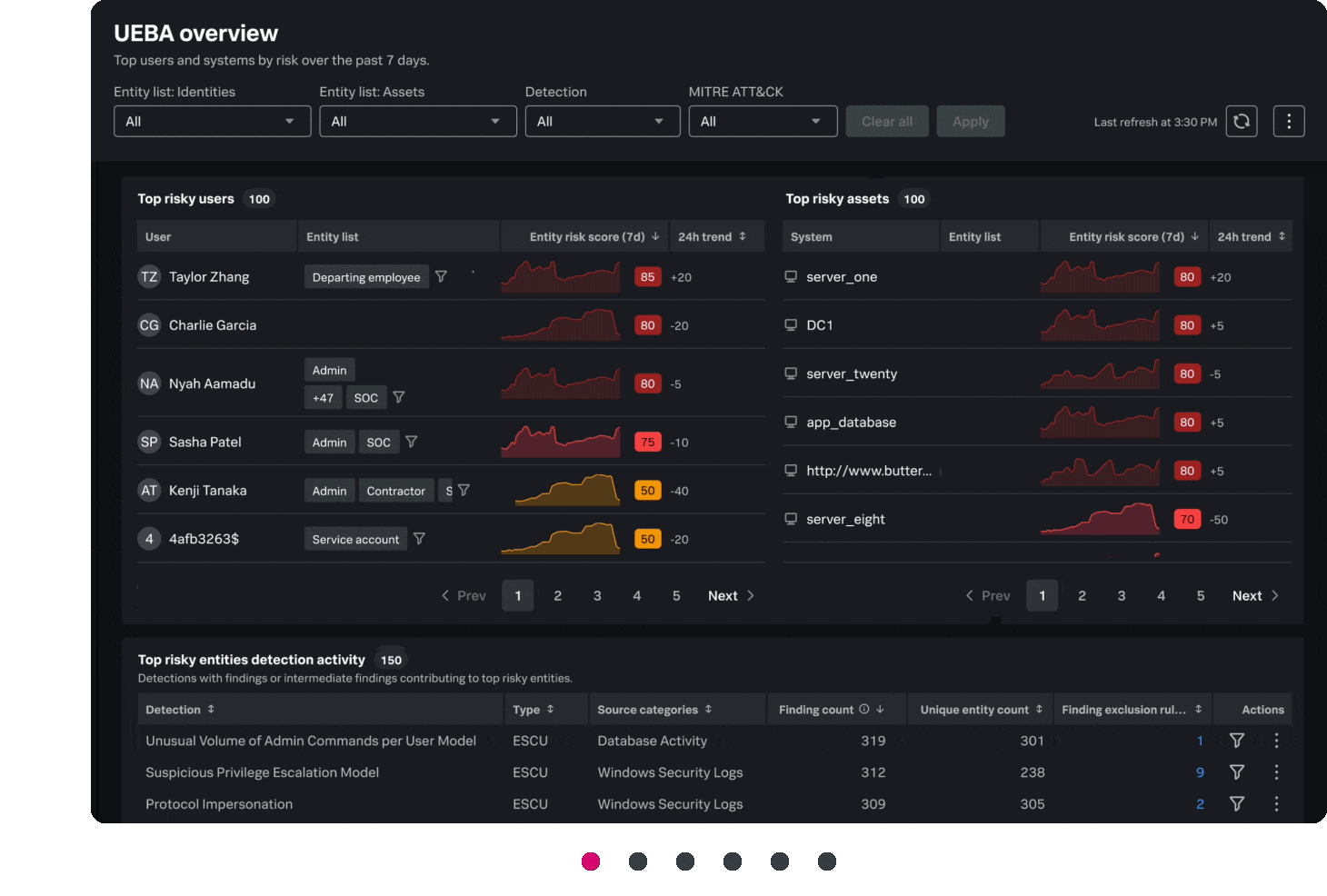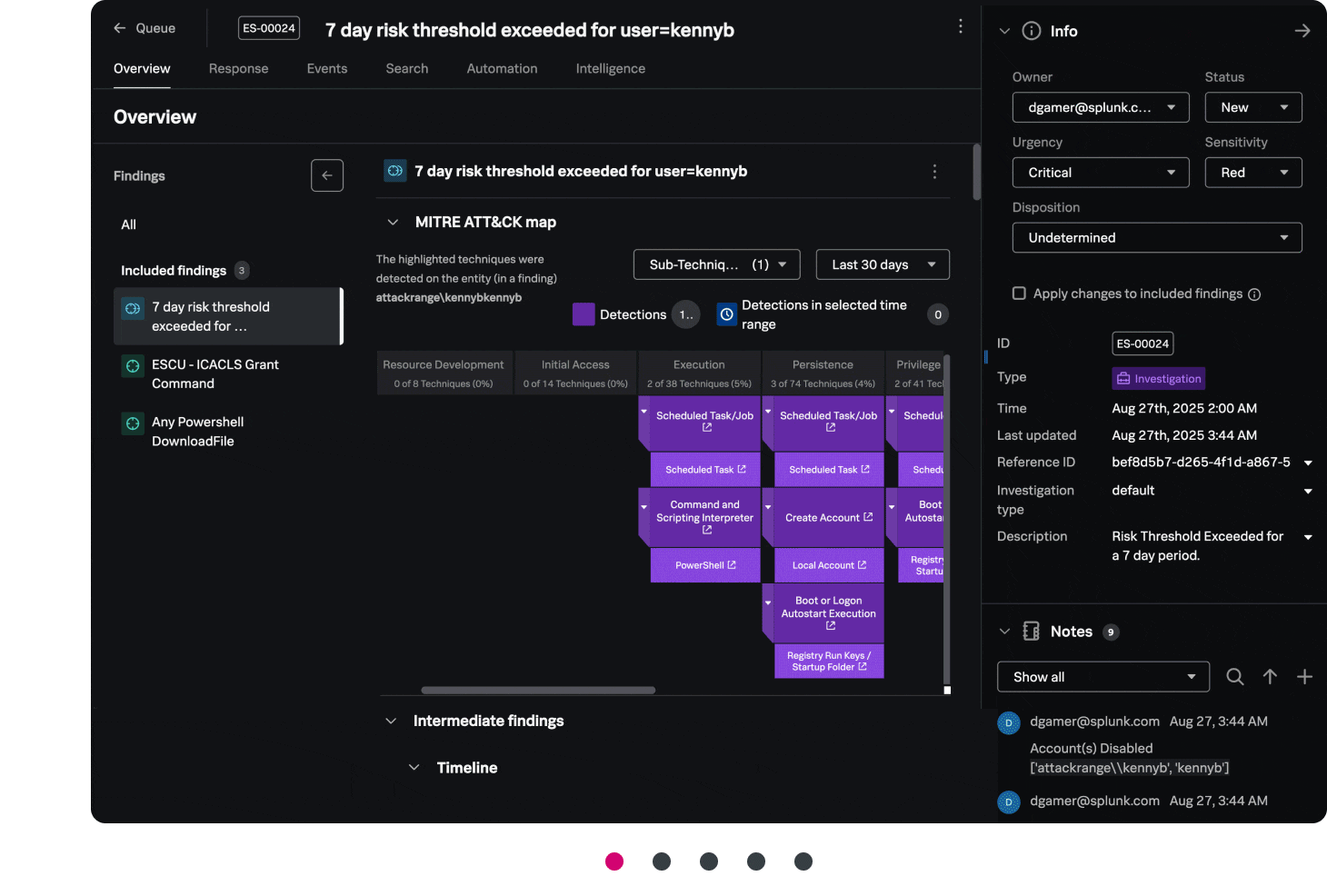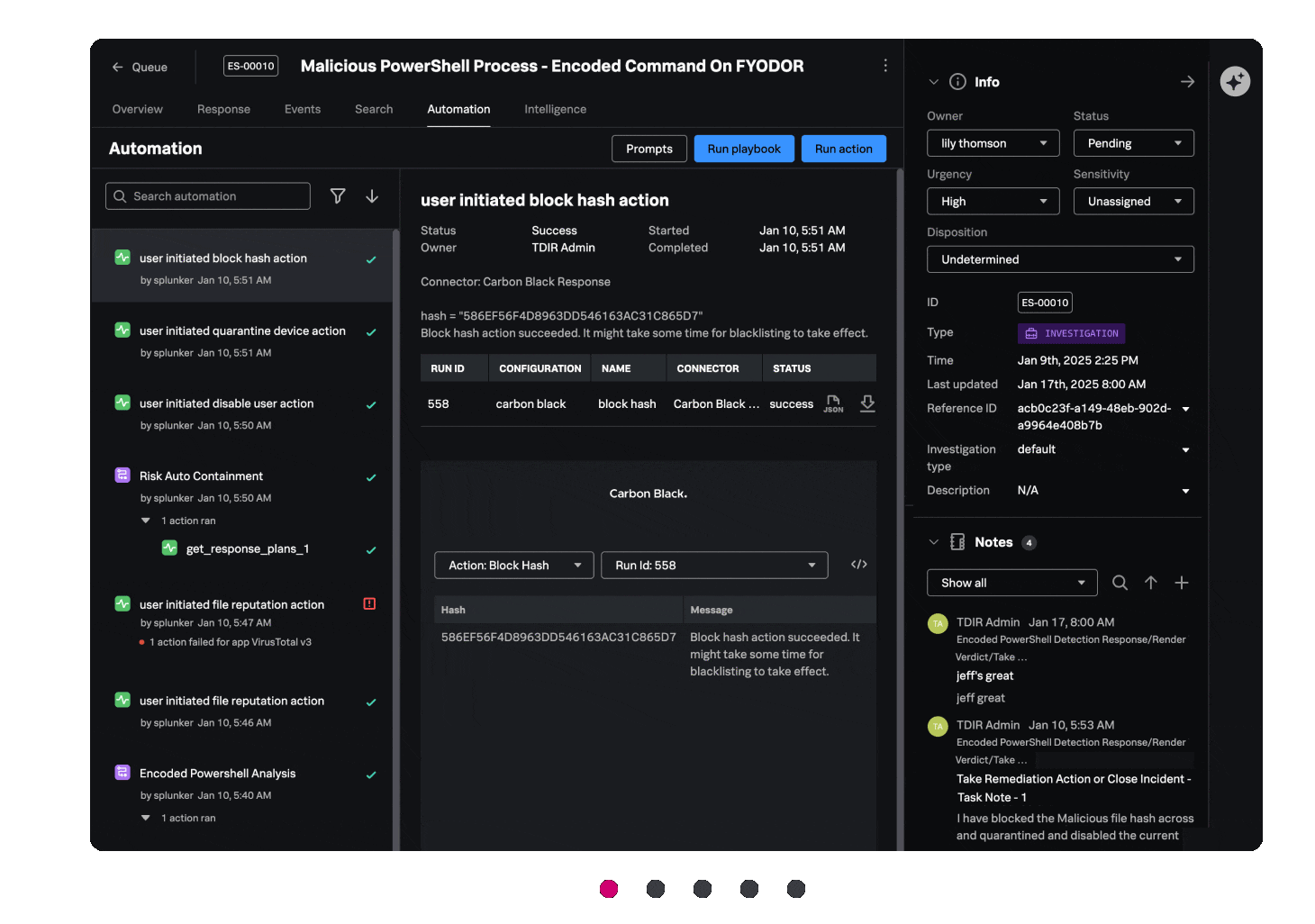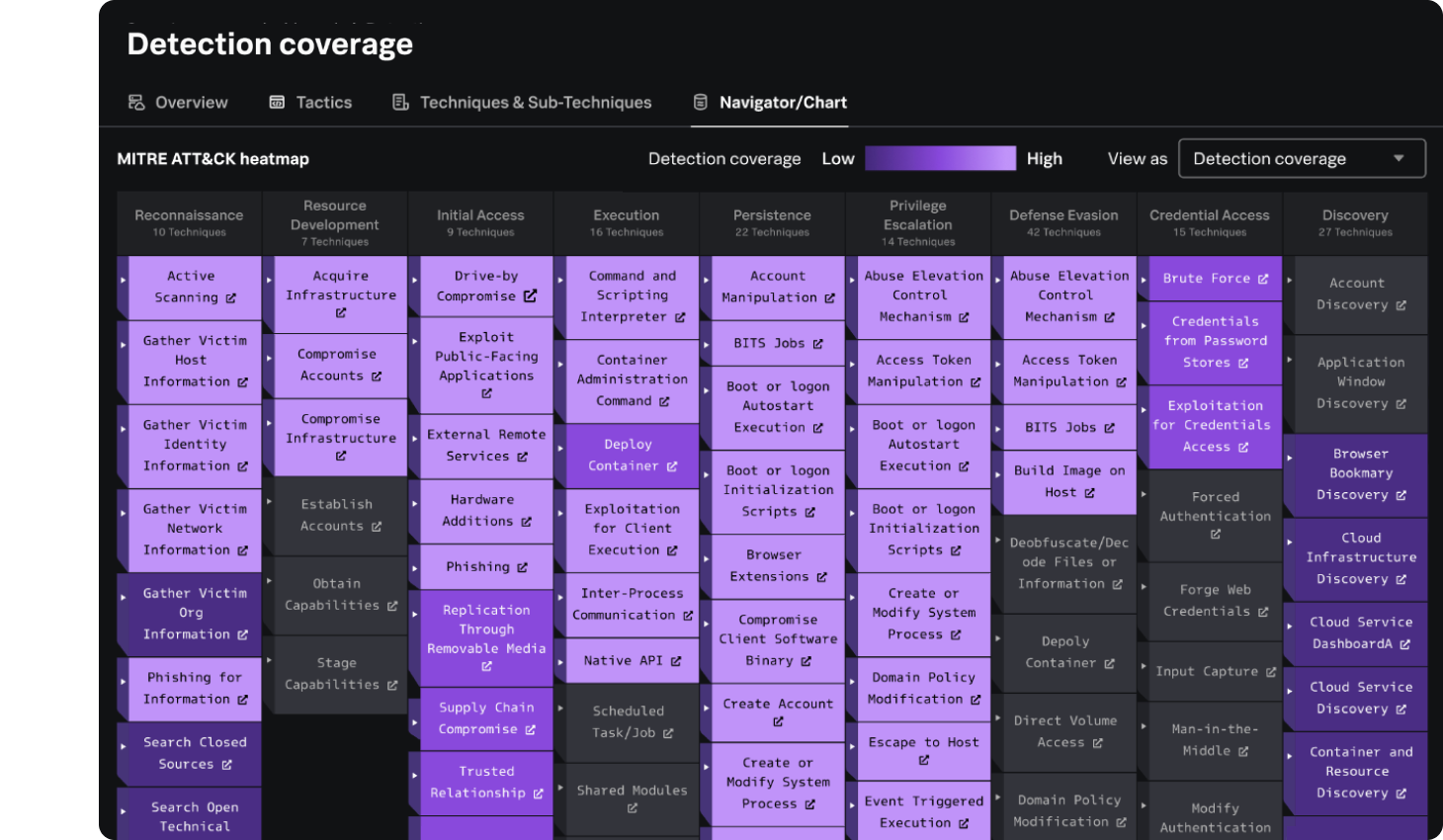| Essentials Edition | Premier Edition | |
|---|---|---|
| What’s included | ||
| Security monitoring |
Get a unified view across all environments for clearer threat visibility and faster, data-driven response. | |
Threat detection |
Tackle unknown and known threats with a range of detections (correlations, rule-based, AI/ML, and custom). | |
| Threat investigation |
Leverage the unified Mission Control interface to rapidly analyze, identify and investigate threats for an effective response. | Accelerate investigation through automated playbooks and amplify human expertise to automatically enrich alerts with more context. |
| Threat hunting |
Use findings and searches to identify malicious activity and mitigate attacks before they escalate. | Enhance threat hunting by leveraging UEBA’s ML-driven behavioral insights and accelerate evidence gathering and response with one-click automated runbooks. |
| Automation |
Use one-time Adaptive Response actions for basic orchestration or integrate with a SOAR product for full spectrum automation. | Accelerate response time, minimize human error, and ensure consistent enforcement of security policies. Available OOTB for every person in the SOC. |
| Insider threat detection |
Requires manual implementation or integration with a separate product. | Mitigate insider threat in real time using OOTB, proven, and scalable ML models, fully integrated in investigation workflows. |
| Data management and federation* |
Obtain data visibility with Federated Search and Federated Analytics. *May incur in additional costs |
|
analyst report
Unified TDIR business value: Resolve incidents 55% faster
According to IDC, Splunk's unified TDIR platform delivers 304% ROI, 64% faster threat identification, and a 12-month payback, helping organizations accelerate response, cut security costs by $4.89M annually, and boost cyber resilience.

Frequently asked questions
Splunk Enterprise Security (ES) is an integrated threat detection, investigation, and response (TDIR) platform that streamlines security workflows into a unified experience. It integrates capabilities like security information and event management (SIEM), agentic AI and SOAR for automation, UEBA, and AI/ML for improving detection accuracy and response speed.
By bringing these capabilities into a single interface, Enterprise Security reduces inefficiencies, eliminates tool silos, and ensures that SOC teams can detect, investigate, and respond to threats more effectively.
Switching to ES Premier delivers immediate, tangible benefits to current Splunk customers. These include:
- Tool consolidation: Consolidating various security tools into a unified platform for TDIR streamlines workflows and significantly reduces the time and complexity teams face when managing incidents. By integrating disparate tools into a single interface, customers can eliminate context switching, reduce manual steps, and gain a centralized view of threats and alerts.
- Integrated machine-learning powered UEBA: Customers gain deeper insights into anomalous user and entity behavior to identify insider threats, compromised accounts, and advanced methods such as zero-day attacks.
- SOAR capabilities for the entire SOC: ES Premier removes previous limitations on who can use security orchestration, automation, and response (SOAR) — making automation available to all team members — regardless of their role or seniority. This ensures that every SOC role can streamline workflows, enrich alerts, and execute response actions.
By adopting ES Premier now, customers can reduce operational inefficiencies, scale their security operations, and take advantage of the latest AI-driven capabilities.
*Controlled availability where available.
As for today, Enterprise Security currently has two versions of editions that customers can choose from: Essentials and Premier. ES Essentials offers not only the well-known SIEM, but also AI Assistant for Security (AIA), and Detection Studio when available.
Splunk Enterprise Security Essentials is a security information and event management (SIEM) solution that has been a leader in the market for over a decade. Meanwhile, Splunk Enterprise Security Premier extends beyond the capabilities of solely SIEM. ES Premier is a new unified platform for threat detection, investigation, and response that brings together SIEM, UEBA, SOAR, and AI capabilities — all built into a single platform to address today’s rapidly evolving security landscape.
Splunk Enterprise Security (ES) leverages agentic AI to boost security operations center (SOC) team efficiency by automating routine, low-complexity tasks through progressive autonomy. This approach allows SOC teams to gradually increase AI’s role — ranging from fully automated actions to AI suggestions requiring approval — while maintaining human oversight.
ES includes advanced features like malware reversing, which automatically breaks down malicious scripts line-by-line, extracts indicators of compromise, flags evasion techniques, and groups recurring behaviors to speed up analysis. Additionally, there is a triaging agent that evaluates, prioritizes, and explains alerts, helping SOC teams focus on the most critical threats.
With natural language commands, SOC teams can quickly build and customize automation playbooks and detection rules without needing advanced technical skills. By streamlining alert enrichment, triage, investigation, and malware analysis, ES reduces operational burden and enables SOC analysts to focus on high-impact security tasks.




